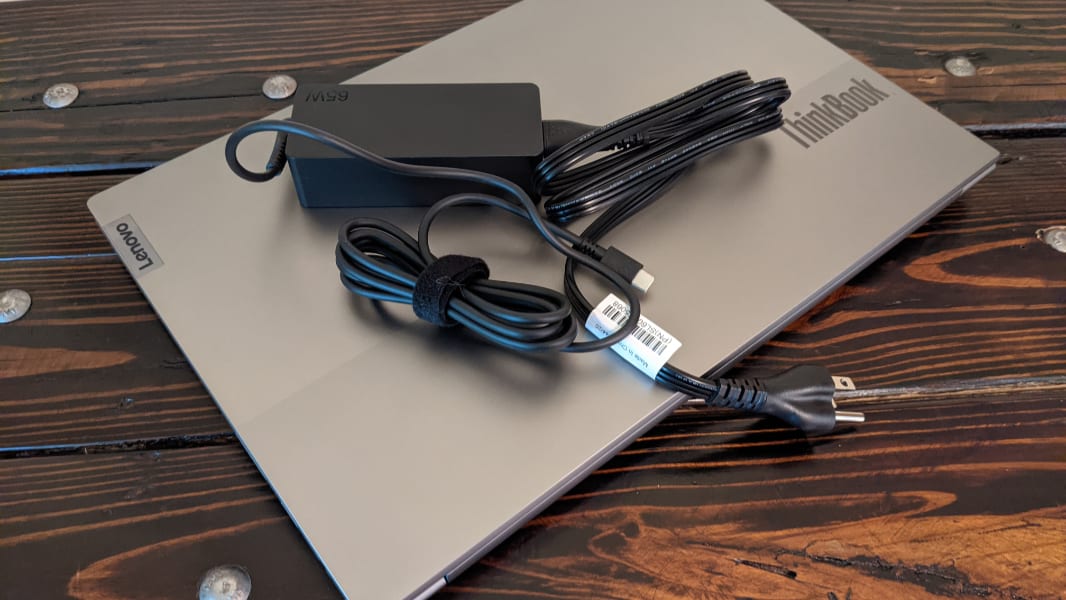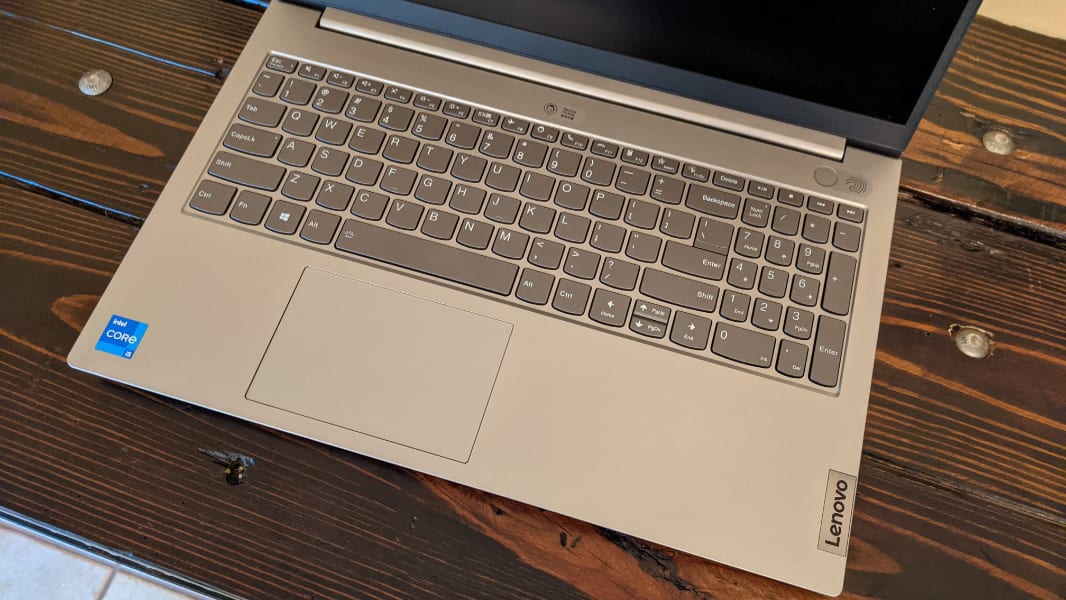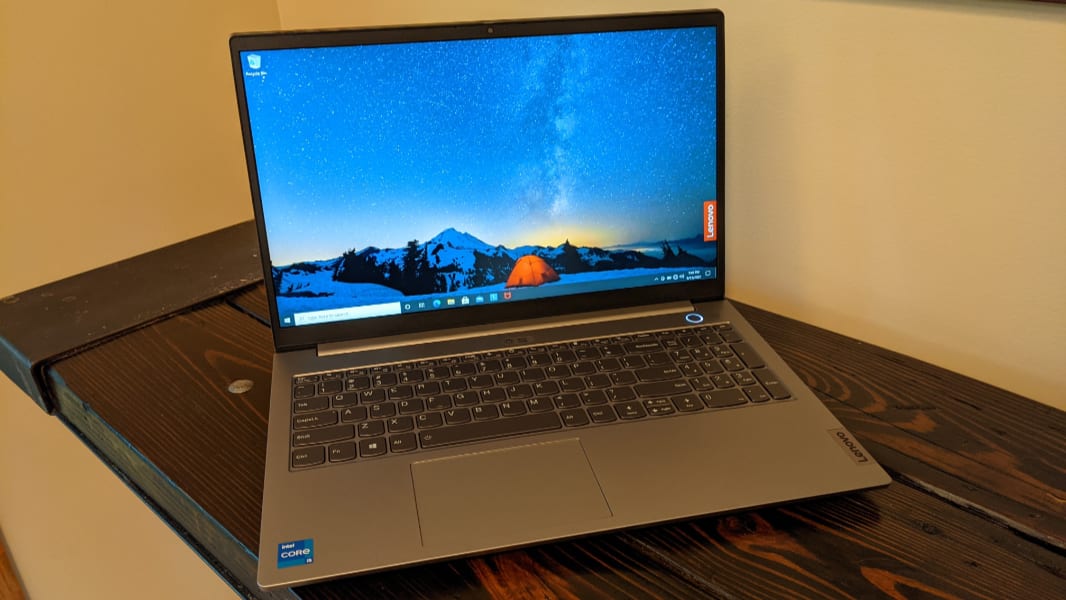
Lenovo introduced its small business-focused ThinkBook two years ago and has expanded the product line to include 13-, 14-, and 15-inch form factors. I’ve looked at the ThinkBook 13s and ThinkBook 14s in the past, but this time around, I’ll be reviewing the new, second-generation ThinkBook 15.

And it’s no Ultrabook, that’s for sure. At 14.1 x 9.25 x .74 inches and 3.75 pounds, the ThinkBook 15 is big and heavy. And it will be more comfortable in work-from-home situations that it will be taking it on the road, though I hope to do just that sometime in the future.

But the size and weight tradeoffs will likely be worth it to many members of the audience. It starts at under $1000, provides an expansive 15.6-inch display, is powered by modern 11th-generation Intel Core processors and optional discrete NVIDIA graphics, and offers an impressive array of expansion ports.
The design is certainly attractive enough. I’ve always liked the austere look of the ThinkBook lineup. And in this case, the plain Mineral Gray color scheme is broken up by a subtle two-tone effect on the outside of the display lid. It’s a nice look.
Open up the display, and you’ll find a 15.6-inch IPS panel offering 220 to 300 nits of brightness and optional multitouch capabilities, depending on the configuration. But your only resolution choice is Full HD (1920 x 1080); I’d have preferred seeing at least a 1440p option on a display this size, but I like that the display can at least lay flat.

The scalloped, backlit, and spill-resistant keyboard and touchpad will be familiar to anyone who has used a premium Lenovo portable PC in recent years.

But thanks to the sheer size of this beast, there’s a numeric keypad on the right.

And there are some useful Unified Communications keys on the F9 through F11 keys in the top row. One that’s new to me is a dedicated support key that can quickly get you in touch with web-based help and Lenovo’s support staff.
Inside the ThinkBook, you’ll find 11th-generation Intel Core i3, i5, or i7 chipsets with Intel UHD or Iris Xe graphics, optional NVIDIA GeForce MX450 discrete graphics, up to 40 GB of DDR4-3000 RAM (with 8 GB soldered onto the motherboard and up to 32 GB on a SO-DIMM card), and an M.2 SSD up to 1 TB with an optional 2.5-inch HDD up to another 2 TB.
Communications are modern, with Intel Wi-Fi 6 and Bluetooth 5.1. There’s also a 720p webcam with a manual ThinkShutter privacy shutter, and a Windows Hello fingerprint reader built-in to the large round power button that provides one-step power-on and sign-in. (Speaking of which, you can also enable a new feature called Flip to Boot that will boot the system when you open the display lid.

Lenovo didn’t provide any battery life estimates, but the ThinkBook can be had with a 45 or 60 Wh battery. Both support Rapid Charge, with up to a 50 percent charge in 30 minutes, or up to 80 percent in one hour.
The port selection is impressive.
On the left, you’ll find a USB-C 3.2 Gen 2 port, a USB 4/Thunderbolt 4 port, a full-sized HDMI 1.4 port, and a full-sized USB-A 3.2 Gen 1 port that’s always on for powering phones and other peripherals, plus a headphone/mic combo jack and some indicator lights.

On the right, Lenovo provides some options we just don’t see that much anymore, including a 4-in-1 card reader, a second full-sized USB-A 3.2 Gen 1 port, and an RJ45 Ethernet port, plus a Kensington Lock slot.

Lenovo doesn’t bundle any crapware on the ThinkBook aside from McAfee LiveSafe. There are only three Lenovo-branded utilities preinstalled.
The review unit shipped with an Intel Core i5-1135G7 processor, 8 GB of RAM, a 512 GB SSD, and a non-multitouch display, so it’s most likely the base unit. I’ll find out more about pricing and configurations before the review.
